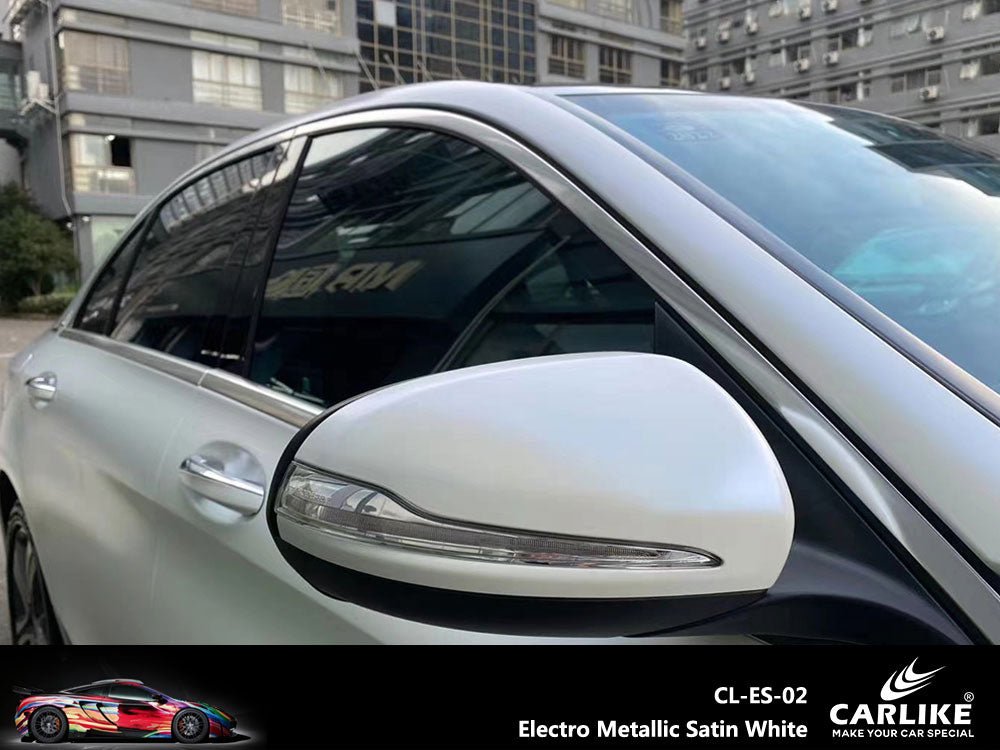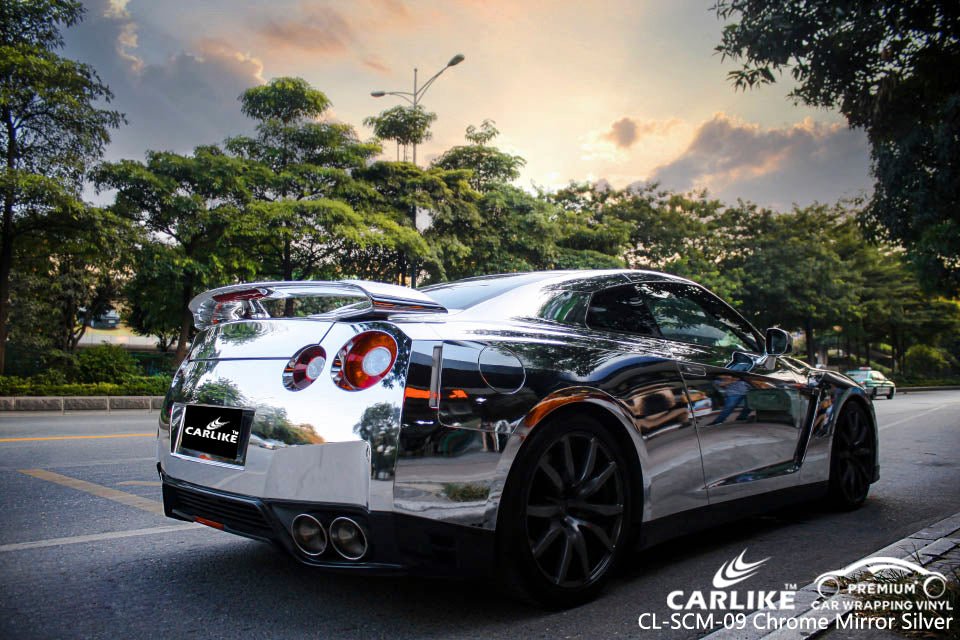Gathering the Right Tools and Materials
Here's a list of essential tools and materials you'll need for a smooth car wrap vinyl removal process, as well as recommended cleaning agents and solvents:
Essential Tools for Car Wrap Vinyl Removal:
1. Heat Gun or Heat Gun with Variable Temperature Settings:
- Used to soften the adhesive, making it easier to peel off the vinyl.
2. Plastic Razor Blades or Wrap Gloves:
- Provide a safe way to lift and peel the vinyl without damaging the vehicle's surface.
3. Plastic Trim Tools or Squeegees:
- Assist in gently prying and lifting the vinyl, especially around edges and contours.
4. Adhesive Remover or Solvent:
- Helps dissolve and remove any residual adhesive left on the surface.
5. Microfiber Towels or Soft Cloths:
- Used for cleaning and wiping down the vehicle's surface.
6. Respirator or Dust Mask:
- Provides protection against dust and fumes, especially when using solvents.
7. Gloves:
- Protect your hands from any chemicals or adhesives during the removal process.
8. Eye Protection:
- Safety goggles or glasses to shield your eyes from debris and chemicals.
9. Drop Cloths or Plastic Sheeting:
- Protects the surrounding area from any debris or adhesive that may fall off during removal.

Recommended Cleaning Agents and Solvents:
1. Isopropyl Alcohol (Rubbing Alcohol):
- Effective for removing light adhesive residue and preparing the surface for a new application.
2. Citrus-Based Adhesive Remover:
- A natural and less harsh alternative to traditional adhesive solvents.
3. Goo Gone or Similar Adhesive Removers:
- Specifically designed to dissolve adhesives and sticky residues.
4. 3M General Purpose Adhesive Cleaner:
- A reputable brand known for effective adhesive removal.
5. Simple Green or Similar Multipurpose Cleaner:
- Useful for general cleaning and preparation before applying a new wrap.
6. Warm Soapy Water:
- A mild cleaning solution that can be used in conjunction with plastic razor blades for gentle adhesive removal.
7. WD-40 or Light Lubricating Oil:
- Can be used to soften and dissolve adhesive residues, especially for tougher spots.
Remember to follow safety precautions when working with solvents and always test any new cleaning agents in an inconspicuous area to ensure they won't damage the vehicle's paint or finish. Additionally, provide proper ventilation when using any chemicals.




Step-by-Step Guide to Removing Car Wrap Vinyl
Here's a detailed step-by-step guide to removing car wrap vinyl:
Step 1: Gather the Necessary Tools and Materials
Before you begin, make sure you have the following tools and materials on hand:
- Heat gun or heat source
- Plastic scraper or squeegee
- Adhesive remover or rubbing alcohol
- Microfiber cloths
- Soapy water solution (water mixed with a few drops of dish soap)
- Isopropyl alcohol (optional)
- Protective gloves and eyewear
Step 2: Prepare the Work Area
Choose a well-ventilated area with enough space to maneuver around the vehicle. Ensure there's ample lighting to see the wrap clearly. Lay down a drop cloth or plastic sheeting to catch any debris or adhesive residue.
Step 3: Start with Heat Application
Begin at one corner of the car wrap. Use a heat gun on low to apply heat evenly to the vinyl. Keep the heat source moving to avoid overheating and damaging the paint. The heat softens the adhesive, making the vinyl easier to peel.
Step 4: Peel off the Vinyl
With the heat applied, use a plastic scraper or your fingers to gently lift the edge of the vinyl wrap. Continue to apply heat as needed and slowly peel the vinyl away from the surface. Work in a smooth, controlled motion to prevent tearing.
Step 5: Address Any Adhesive Residue
After removing the vinyl, there may be leftover adhesive on the surface. Use an adhesive remover or rubbing alcohol on a clean cloth to gently rub away the residue. Take care not to scrub too hard to avoid damaging the paint.

Step 6: Clean the Surface
Prepare a soapy water solution and use a microfiber cloth to thoroughly clean the area where the wrap was removed. Rinse with clean water and pat dry with another cloth.
Step 7: Optional - Use Isopropyl Alcohol
For any stubborn adhesive spots, you can apply a small amount of isopropyl alcohol to a clean cloth and gently rub the area. Be sure to rinse thoroughly after.
Step 8: Final Inspection
Inspect the surface to ensure all adhesive and vinyl remnants have been removed. Check for any scratches or damage that may have occurred during the removal process.
Step 9: Post-Removal Care
Consider applying a wax or sealant to protect the paint and provide a clean, smooth finish.
Step 10: Dispose of Waste Properly
Dispose of the removed vinyl wrap and any used materials according to local regulations.
Remember, patience and careful attention to detail are crucial in this process. Take your time and work methodically to ensure a safe and efficient removal of the car wrap vinyl.
Avoiding Damage to the Vehicle's Surface
Here are some techniques to prevent scratches, dents, or paint damage during the car wrap vinyl removal process, as well as tips for working around sensitive areas:
Techniques to Prevent Damage:
1. Use Proper Tools:
- Ensure you have the right tools for the job, including soft squeegees, plastic pry tools, and a heat gun. Avoid using sharp or abrasive tools that could damage the paint.
2. Apply Heat Gradually:
- When using a heat gun, start on a low setting and gradually increase the heat. Avoid holding the heat source too close to the surface to prevent overheating.
3. Work in Small Sections:
- Focus on small areas at a time, especially when using heat. This allows for better control and reduces the risk of overheating or overstretching the vinyl.
4. Maintain a Consistent Angle:
- Keep your tools at a consistent angle to the surface. Avoid sharp angles or applying excessive pressure, which could lead to scratches or dents.
5. Be Gentle but Firm:
- Apply gentle pressure when using tools to lift the vinyl. Avoid excessive force that could cause damage.
6. Check for Adhesive Residue:
- Regularly inspect the surface for any leftover adhesive. Use a suitable adhesive remover and a soft cloth to gently clean it without scratching the paint.

Tips for Working Around Sensitive Areas:
1. Use Low Heat Around Curves and Edges:
- When working on curves, edges, or seams, use lower heat settings to avoid overstretching or damaging the vinyl. Gradually increase heat if needed.
2. Use Plastic Pry Tools:
- Use plastic pry tools around sensitive areas to prevent accidental scratches or dents. These tools are less likely to cause damage compared to metal ones.
3. Lift the Vinyl Slowly:
- When removing vinyl from curves or edges, lift it slowly and carefully. Avoid pulling or tugging abruptly, as this could damage the vinyl or underlying surface.
4. Protect Sensitive Areas with Masking Tape:
- Use masking tape to cover any particularly sensitive areas like sharp edges or trim. This adds an extra layer of protection during the removal process.
5. Work with a Partner if Possible:
- Having an extra set of hands can be helpful, especially when working around curves or edges. This allows for better control and reduces the risk of mistakes.
6. Inspect Frequently:
- Regularly stop and inspect the area you're working on. Look for any signs of stress, overstretching, or potential damage. Address any issues promptly.
By following these techniques and tips, you can greatly minimize the risk of scratches, dents, or paint damage during the car wrap vinyl removal process, especially around sensitive areas like curves, edges, and seams.
FAQ for how to remove car wrap vinyl?
Q: What tools do I need to remove car wrap vinyl?
A: You'll need tools like a heat gun, plastic pry tools, soft squeegees, adhesive remover, microfiber cloths, and masking tape.
Q: Can I use a hair dryer instead of a heat gun?
A: While a hair dryer can work in a pinch, a heat gun provides more consistent and controlled heat, which is crucial for safe vinyl removal.
Q: How do I prepare my vehicle for vinyl removal?
A: Start by cleaning the car thoroughly to remove dirt and debris. Ensure it's parked in a well-ventilated area with adequate lighting.
Q: What's the best way to apply heat during removal?
A: Begin with low heat and gradually increase as needed. Hold the heat source at a safe distance from the surface to prevent overheating.
Q: How do I avoid damaging the paint underneath?
A: Use plastic pry tools and apply gentle, consistent pressure. Work in small sections and be cautious around edges, curves, and seams.
Final Words
In conclusion, mastering the art of safely removing car wrap vinyl is a valuable skill for any vehicle owner. By following the steps outlined in this guide, you can ensure a smooth and damage-free process. Remember to gather the right tools, apply heat judiciously, and work with precision, especially around curves and edges. Taking your time and exercising patience will pay off in preserving the integrity of your vehicle's paint job. With these techniques, you can confidently peel back the layers, revealing a pristine surface ready for its next transformation. Happy unwrapping!








